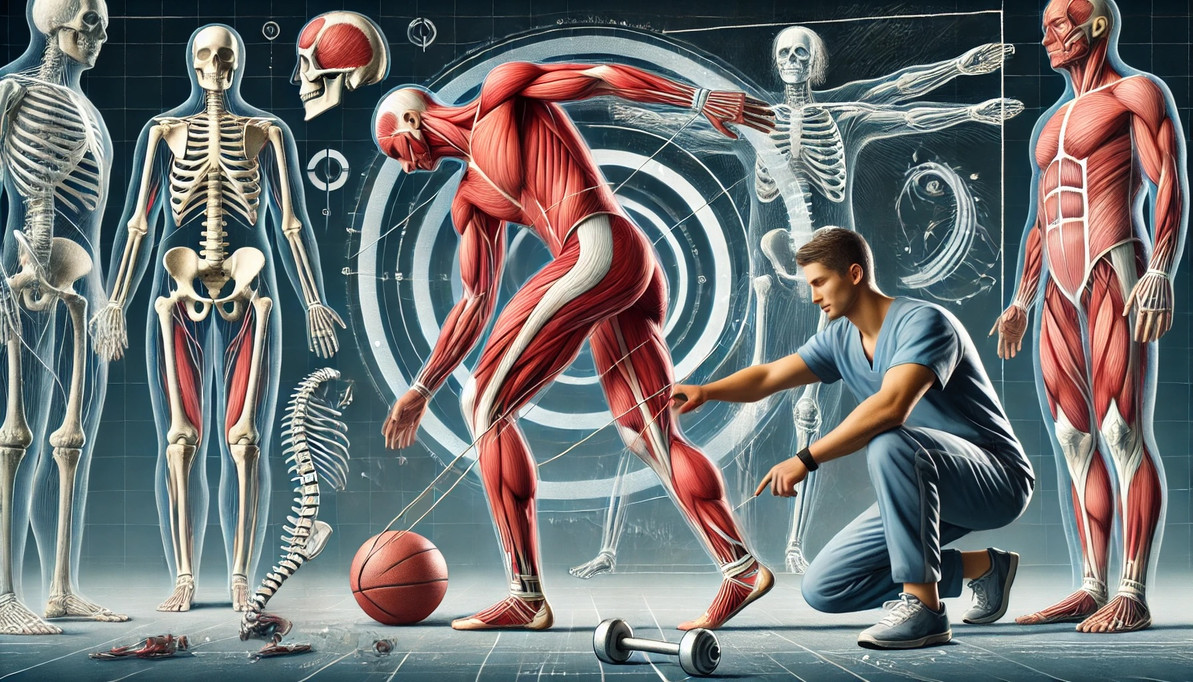The Power of Moving our Bodies Correctly: How Proper Mechanics Enhances Health and Prevent Injury
Understanding how our bodies move is critical to maintaining long-term health and preventing injury. The muscular system and the complexity of anatomy allow for a wide range of motion (ROM) that we rely on for everyday activities and athletic performance. However, without proper mechanics, even strong muscles can be overworked or improperly used, leading to injuries.
While strength, flexibility, and mobility are essential for overall fitness, the focus has begun to shift to functional movement, an approach that emphasizes training the body to move effectively and efficiently in everyday activities and real-world scenarios. Physical therapy plays an essential role in this process, with physical therapists specializing in neuromuscular re-education and movement correction to ensure that muscles and joints function in harmony, reducing the risk of injury and improving overall movement quality.
One of the most important aspects of physical health is understanding how to move correctly, whether in daily life or athletic performance.
Moving Correctly: The Cornerstone of Injury Prevention
Proper movement is essential to avoiding injuries, whether you’re tackling daily chores or pushing your limits in athletic pursuits. Everyday tasks, like bending down to lift a heavy object or reaching up to grab something from a shelf, may seem harmless, but performing these movements incorrectly can lead to strain on your muscles, joints, and ligaments. Over time, poor body mechanics during these simple activities can result in overuse injuries, chronic pain, or even joint damage. Injury prevention begins with practicing good movement habits in daily life—keeping your back straight when lifting, using your legs instead of your back, and maintaining balance.
Correct body movement is just as critical in sports and athletics, if not more so. Whether you’re running, jumping, or lifting weights, improper mechanics can dramatically increase the risk of injury. For athletes, even minor form mistakes, repeated over time, can lead to significant injuries, from pulled muscles to torn ligaments. Moving correctly ensures that the right muscles are engaged, reducing strain on vulnerable joints and helping to prevent common sports injuries such as sprains, strains, and tears.
Emphasizing proper movement in daily activities and athletic performance can significantly reduce your risk of injury and improve overall physical health. Injury prevention focuses not just on strength but also on how you move.
Functional movement training has gained attention as a vital component of injury prevention in rehabilitation and athletic training. In addition to practicing proper movement in daily life, this training enhances overall physical performance.
Shifting Focus: From Strength to Functional Movement
In recent years, the focus of training and rehabilitation has shifted from simply building muscle strength and increasing range of motion (ROM) to enhancing functional movement. While developing strength, flexibility, and mobility are still crucial, the way we move has become a key priority for both performance and injury prevention. The muscular system, working in harmony with our bones and joints (the skeletal system), is designed to perform tasks efficiently. However, improper movement can lead to mechanics issues and potentially strong muscle injuries.
Functional movement considers the strength of individual muscles and how they work together within the context of human anatomy. It’s about training the body to perform everyday tasks and athletic movements in ways that align with mechanics. For example, improving ROM and flexibility alone won’t prevent injuries if your body isn’t using the proper mechanics to move efficiently. This is where neuromuscular re-education and movement correction come into play.
Neuromuscular re-education is the process of retraining the brain to signal muscles to activate in the correct sequence, at the right time, and with proper intensity. It focuses on correcting faulty movement patterns and ensuring that the muscles, joints, and nervous system work in harmony. By retraining how the body moves, neuromuscular re-education allows for smoother, more coordinated actions, reduces the risk of overuse, improves injuries, and increases overall efficiency.
Physical therapists are critical in helping individuals achieve this functional movement through targeted assessments and personalized training plans.
The Role of Physical Therapists in Movement Improvement
Physical therapy plays a crucial role in improving movement and preventing injury by addressing dysfunctional movement patterns and retraining the body to move correctly. Physical therapists evaluate how muscles, bones, and joints work together, identifying inefficiencies that can lead to improper mechanics. By focusing on functional movement and utilizing techniques like neuromuscular re-education, they develop personalized programs designed to engage muscles in the correct sequence, ensuring that joints move through their full range of motion (ROM).
This approach enhances muscle strength and flexibility while helping to protect against injury by correcting flawed movement patterns. Physical therapists emphasize training movement patterns that reflect real-life activities—whether lifting, running, or performing everyday tasks—to ensure the body functions optimally in both daily life and athletic performance.
A clear example of the importance of this work is seen in preventing ACL injuries, particularly in female athletes. Research shows that women often exhibit inward thigh rotation and knock knees during physical activities, increasing stress on the anterior cruciate ligament (ACL). By combining strength training with neuromuscular re-education, physical therapists can help reduce these risks, improve movement quality, and lower injury rates. Physical therapists play a crucial role in helping individuals move more efficiently, decrease their risk of injury, and enhance overall physical performance.
The Bottom Line: Moving Correctly Really Does Matter
Injury prevention requires attention to how we move in everyday life and during athletic activities. With the guidance of physical therapists, dysfunctional movement patterns can be addressed, range of motion improved, and activate the right muscles at the right time. Neuromuscular re-education and movement correction helps with this and are crucial tools for ensuring the body moves efficiently, preventing overuse injuries, and enhancing overall physical performance. By prioritizing proper movement mechanics, we can develop a stronger, more resilient body and a safer approach to physical activity.
Related Blog Posts:
- Anatomy Study Guide: The Muscular System
- Measuring Range of Motion Using Goniometers
- Unlocking Movement: The Role of Goniometers in Physical Therapy
- Unveiling the Mechanics of Movement: Conduction Gait Analysis with an Inclinometer
Related Products for Purchase:
- Anatomical Chart - Musculature, Laminated
- Anatomical Chart - Knee Joint, Laminated
- Anatomical Chart - Hand and Wrist, Laminated
- Anatomical Chart - Foot and Ankle, Laminated
- Anatomical Chart - Acupuncture Body, Laminated
- Anatomical Arm Models
- Anatomical Leg Models
- Anatomical Muscle Models
Recent Posts
-
Acupuncture vs. Dry Needling: What’s the Difference?
At first glance, acupuncture and dry needling might seem identical. Both involve inserting thin need …Jun 11th 2025 -
What Is Dry Needling? A Modern Approach to Pain Relief and Muscle Recovery
Chronic muscle pain, tension, and restricted movement can significantly impact your daily life, sign …Jun 11th 2025 -
The Kinetic Chain and Its Importance?
The kinetic chain is a key principle in physical therapy, referring to the way muscles, joints, and …Apr 18th 2025



